Motorcycle Investor mag
Subscribe to our free email news
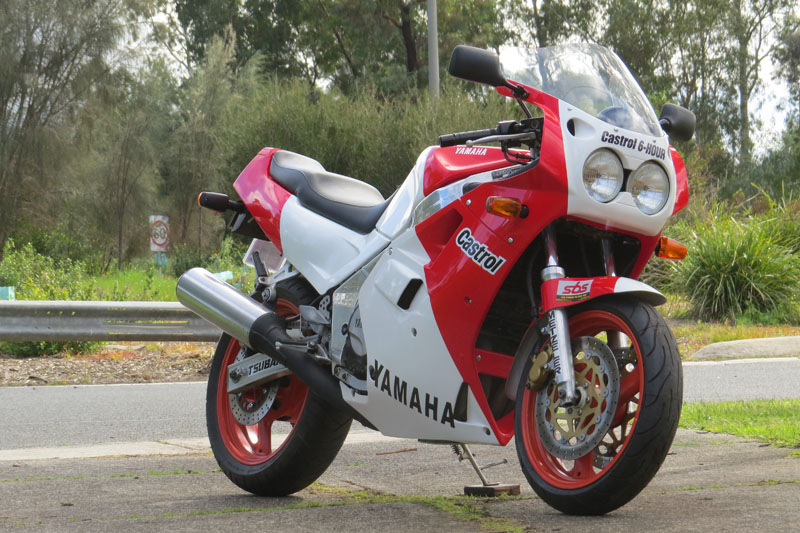
Our bikes – Yamaha FZR1000 1987
August 2020

Project 6-Hour hits the road
by Guy 'Guido' Allen
Finally, our first-model Yamaha FZR1000 is let out
of the shed
It's not as though we have split the atom in the back
shed, but somehow the 'victory' feels as sweet. Project
6-Hour, the 1987 Yamaha FZR1000 that we bought already
painted in team Yamaha race livery for that year, is
registered and running.
A check through my records says it's about four years since I bought the thing out of a damp shed on the other side of town. Where in hell did all the time go? Okay, we've been busy with other things.
The start of this was a first-model FZR1000 which was advertised cheap. At $2600, it was listed as coming with fresh tires, chain and sprockets, but a blown head gasket. Otherwise it was complete, and even ran the original exhaust.
It had also mimicked the full warpaint used by Michael Dowson and Kevin Magee on the machine that won the 1987 Castrol 6-Hour production race. Funnily enough I was at Oran Park that day, reporting on the race for Australian Motorcycle News (AMCN). While the livery looked wonderful, getting around on a bike plastered with tobacco company branding is fraught with problems these days. So I've removed the Marlboro stickers – to my way of thinking, it's just not a fight worth having.
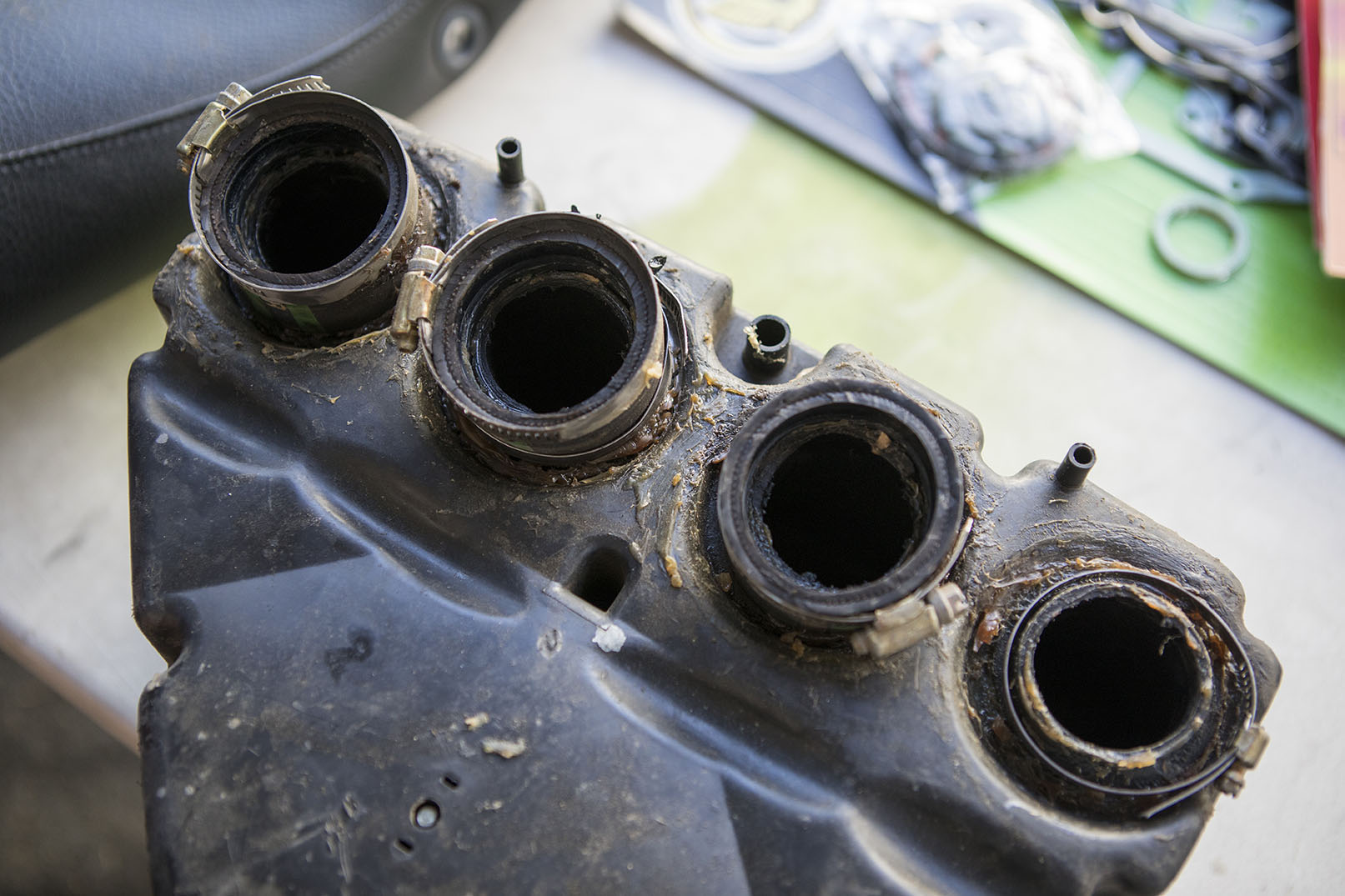
That, however, was the least of my problems. The bike sat for a few more years before I finally got around to taking a closer look. That's when the surprises emerged. By far the biggest was the state of the airbox and induction tubes. They were a complete mess of dodgy parts and gobs of sealant that had to be consigned to the bin.

Also, the water pump was a corroded mess, well beyond repair. However the engine itself appeared untouched, while the carburettors were, incredibly, in great shape.
Overall the architecture is pretty typical for a multi-cylinder motorcycle of the period. So there were plenty of brackets and hoses to be negotiated before you could even think about lifting the head cap.
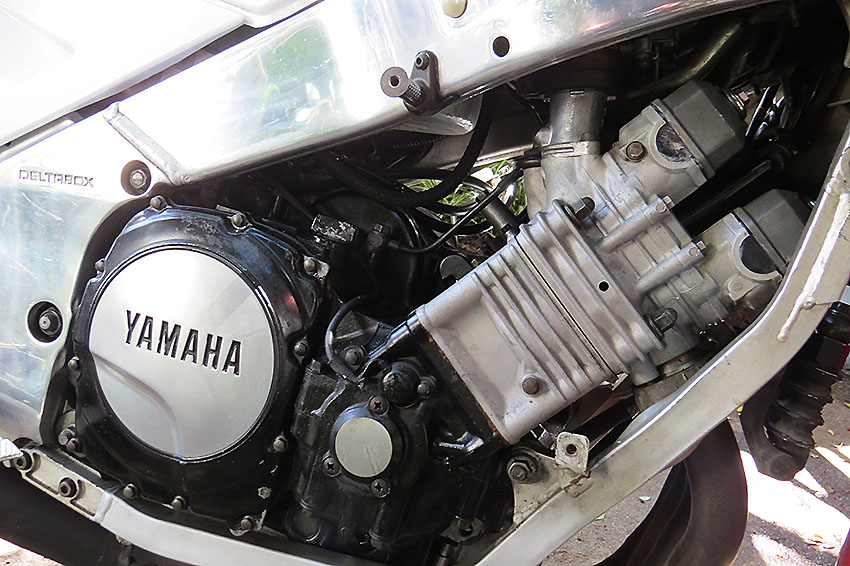
Mercifully the cams seemed in pretty good shape. Not perfect perhaps, but servicable. And this is where I decided that I should call in a professional. Negotiating the 20-valve head was clearly going to be a bit of a mission and handing it over meant I could sleep at night, instead of fretting over whether I'd cocked up a complex piece of machinery.
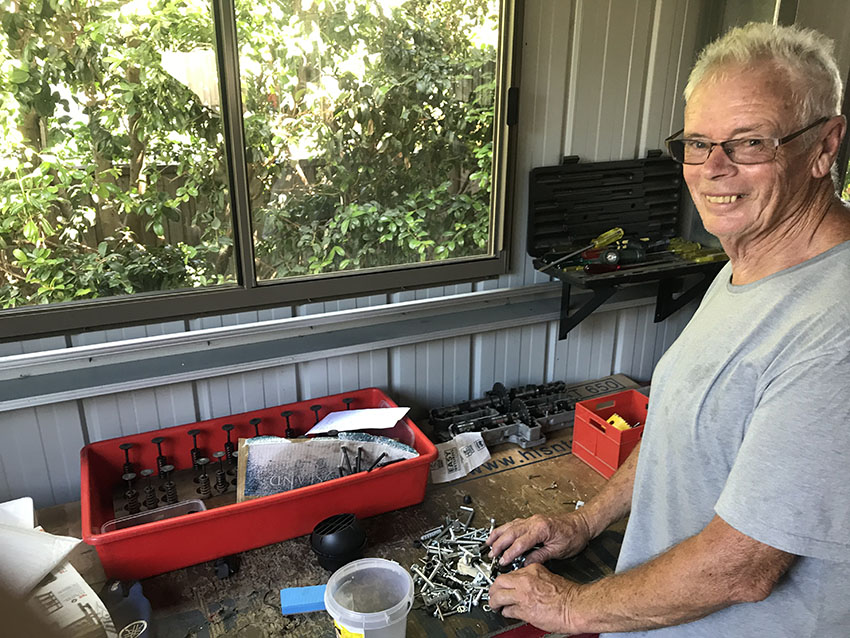
Luckily long-time trade identity Don Stafford (above) was between race bike projects and was available. He knows this series inside-out, having built them into racers when they were current, and again as they've been snapped up for historic racing. In fact, they're so popular for period racing that the local road fleet has significantly diminished.
He was given the bike minus the bodywork, with the request to get it running. Easier said than done. He reported no major dramas, but clearly it was a job that ate up lots of his time. Not surprising, given the complexity of the head and the need to sort a few issues along the way.
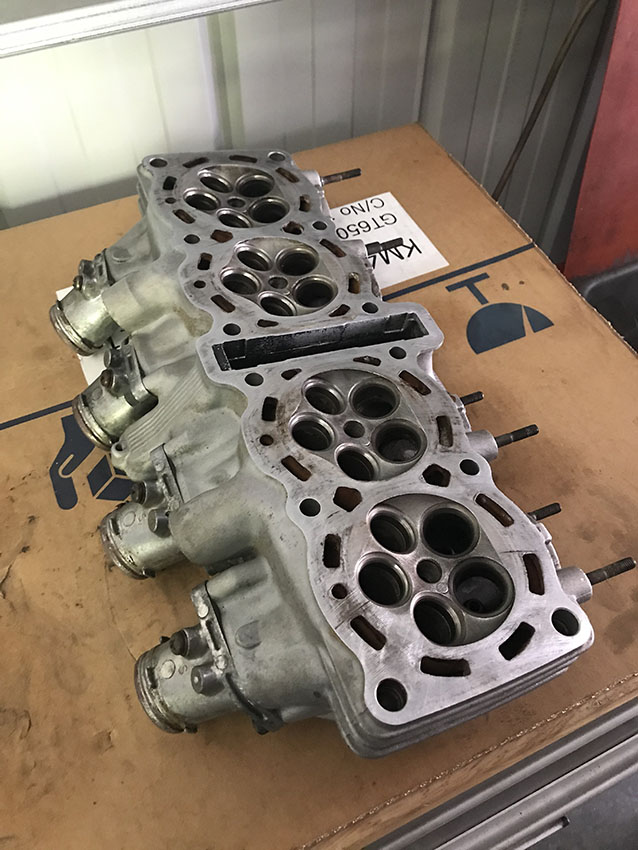
In a perfect world, we might have given it a rebore and rings, but Don reckoned it was fine for scooting about as a street bike. Something that surprised us was just how much moisture the engine had injested over time. It took a couple of oil flushes to fully clear it.
WIth a running bike again, the relatively easy job of refitting the bodywork fell to me. Fiddly of course, particularly with old and sometimes fragile mounts, but we got there.
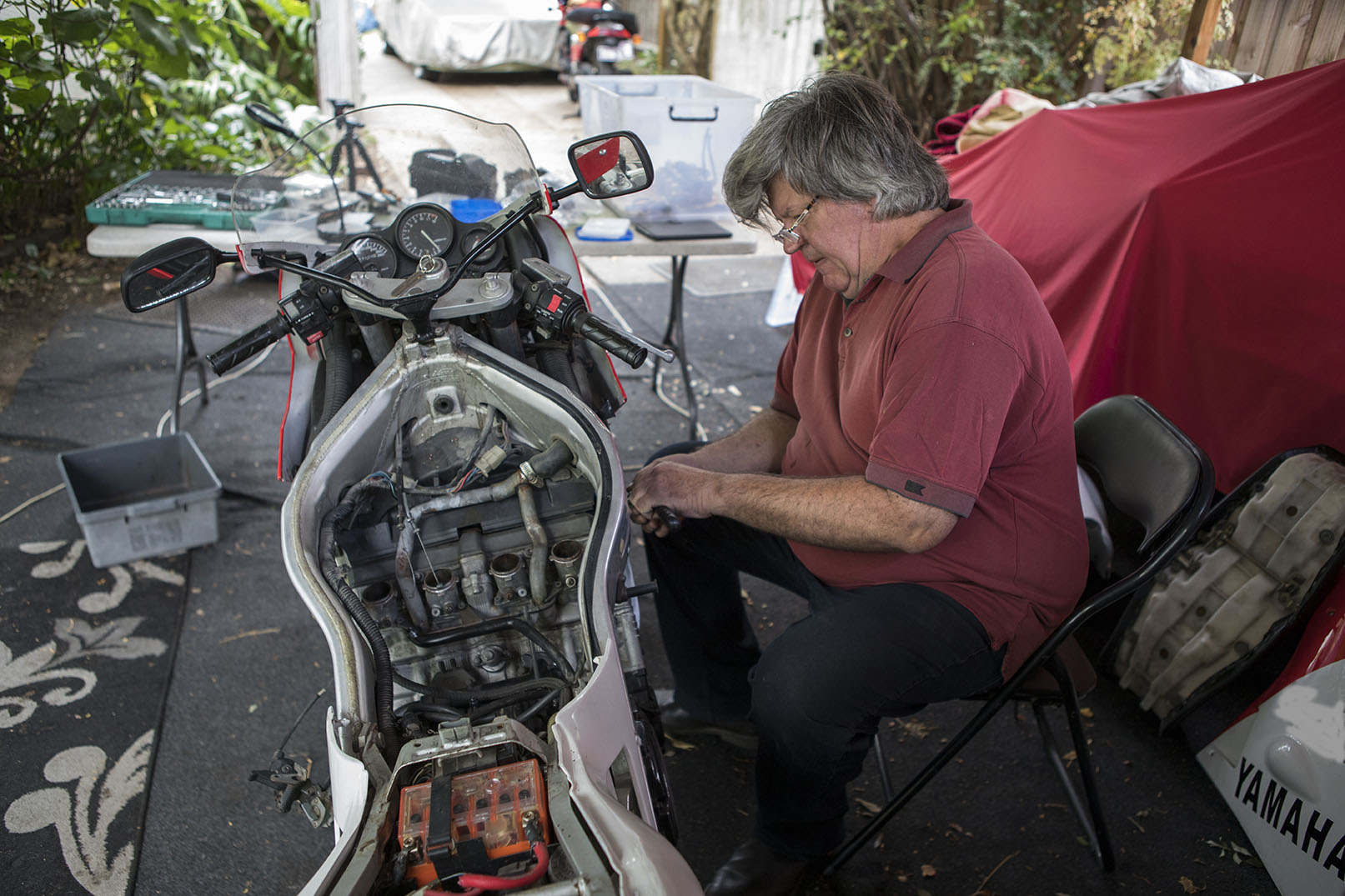
Though I'd flushed out the brake and clutch hydraulics, the front stoppers proved to be stubbornly uncooperative. At first they pumped up fine, but had a tendency to bind. The calipers seemed to be working okay, but the master cylinder felt a bit iffy. We fitted a new seal kit and noticed along the way that the surface of the cylinder bore was marked. Bugger. It refused to bleed properly, so we'd gone from binding brakes to none at all.
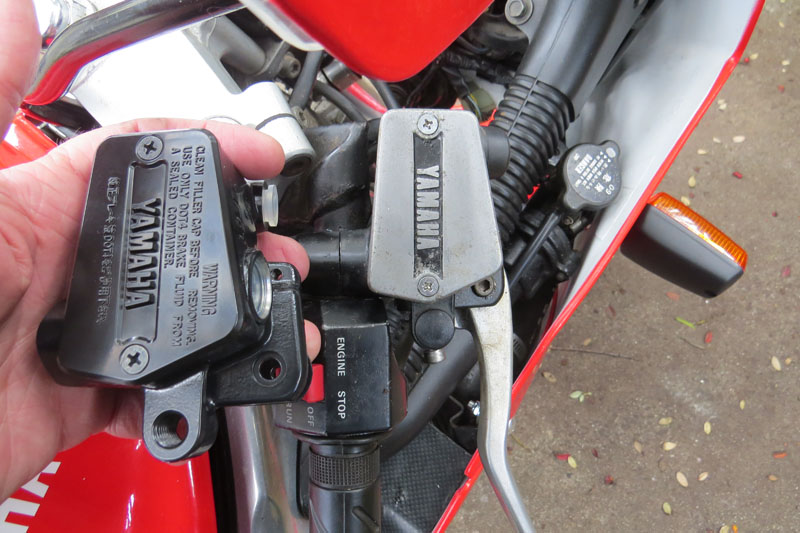
A new master cylinder was ordered from Japan, at a cost of around $400, and sure enough did the trick.
Finally, I could ride it. Though given assorted lockdown restrictions, it hasn't gone very far. It was interesting hopping aboard one of these first-gen FZRs for the first time since they were launched. All-up, I reckon it owes me about $5500, which stacks up as decent fun for the dollar. Running costs are kept low by the fact it's old enough for historic reg around the country.
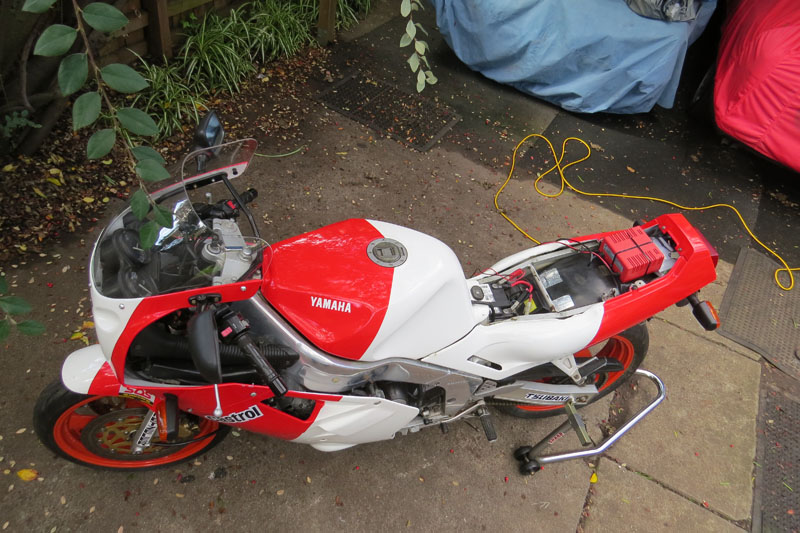
Back in 1987, then AMCN Editor Chris Beattie and I took the new FZR1000 and a Suzuki GSX-R1100 (probably the H model) out for a ride into the hills for a quick comparo. I think we may have been split on our preferences at the time, though they had a lot in common. Both felt like raw sports bikes with a raspy note and serious performance.
The Yamaha was all of seven kilos heavier at 204kg claimed dry and boasted an extra six horses at 136. Really there wasn't much in it when it came to performance, and I suspect brand loyalty or styling preferences were more likely to influence your choice. The Suzuki looked more dramatic, had the bragging rights of an extra 100cc and the edge on price: $10,300 (plus on-road costs) versus $10,800.
However the FZR at one litre fitted in with race rules. Magee and Dowson were odds-on to win from the start – it really was their race to lose – and ended up taking victory (over another FZR) by three laps. And that was the last year for the event.
As you can see, there were a couple of personal connections there that made buying this bike appealing. As a ride, it's still fun. Its seating position is relatively long and rangy for a sports bike, so there's room for a taller person while still feeling light and reasonably nimble.
The power may seem average by current standards, but the performance from the free-revving powerplant is still enough to get your attention. No doubt you'd want to sharpen it up (particularly the chassis) if you were to take it to the track.
However it still has that trademark snarl, with enough performance, braking and handling to make it an entertaining road ride, without fear of being flicked into the weeds. So, was Project 6-Hour a good decision? Yep!
See the contemporary FZR1000-GSX-R1100 comparo from Classic Two Wheels
***
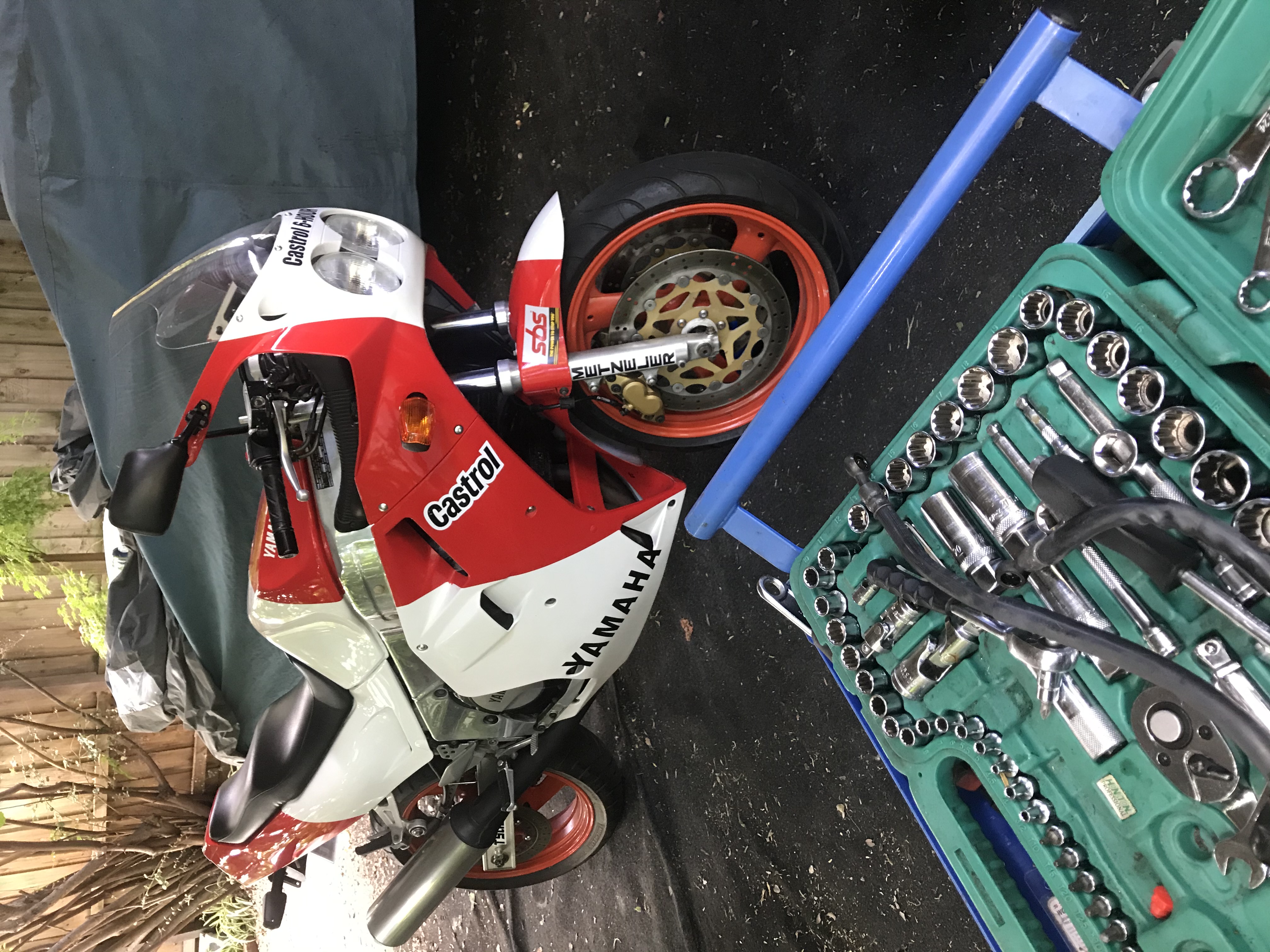
And Another Thing...
A little postscript to the main story. In our pursuit of front brakes that worked acceptably, we eventually faced the inevitable and ditched the original rubber lines.
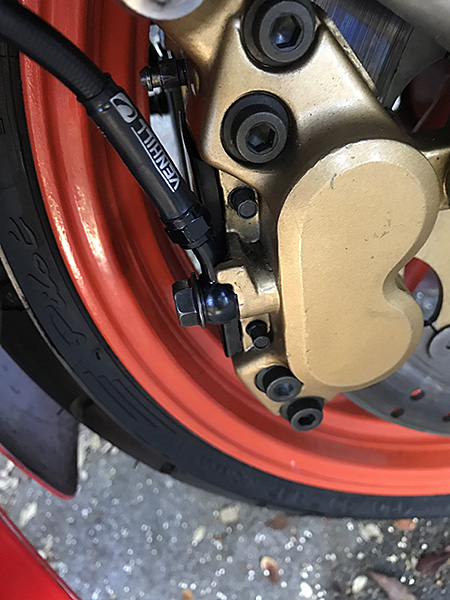
In their place, we put black-wrapped braided steel lines by Venhill. The kit we were sent had lines that were a little long (maybe there was a miscommunication with the retailer), but otherwise they seem to work very well.

What I like about the Venhill system is the caliper and master cylinder fittings screw on to the lines, so it is possible to mix and match fittings to suit the individual circumstances. And yes, the end result was an improvement, as it usually is with a rubber-to-braided steel swap – particularly when the originals are so old.

Below is a period motorcycle magazine ad, celebrating Yamaha's win in the 1987 Castrol 6-Hour.

SPECS: 1987 Yamaha FZR1000
ENGINE:
TYPE: Liquid-cooled, five-valves-per-cylinder inline four
CAPACITY: 989cc
BORE & STROKE: 75 x 56mm
COMPRESSION RATIO: 11.2:1
FUEL SYSTEM: 4 x 37mm BDS Mikuni carburettors
TRANSMISSION:
TYPE: Five-speed, constant-mesh
FINAL DRIVE: Chain
CHASSIS & RUNNING GEAR:
FRAME TYPE: Aluminium beam – Deltabox MkI
FRONT SUSPENSION: 41mm fork with preload adjustment
REAR SUSPENSION: Monoshock, preload & rebound
adjustment
FRONT BRAKE: 310mm disc with four-piston calipers
REAR BRAKE: 240mm disc with two-piston caliper
DIMENSIONS & CAPACITIES:
DRY WEIGHT: 204kg
SEAT HEIGHT: 775mm
WHEELBASE: 1460mm
FUEL CAPACITY: 20lt
TYRES:
FRONT: 120/70-VR17
REAR: 160/60-VR18
PERFORMANCE:
POWER: 99kW (136hp) @ 10,000rpm
TORQUE: 106Nm @ 8500rpm
TOP SPEED: approx 265km/h
OTHER STUFF:
PRICE WHEN NEW $10,800 plus on-road costs
Project 6-Hour story series:
Part 1 – strip
Part 2 – that looks nasty
Part 3 – engine running
Part 4 –
finished!

-------------------------------------------------
Produced by AllMoto abn 61 400 694 722
Privacy: we do not collect cookies or any other data.

Archives
Contact



